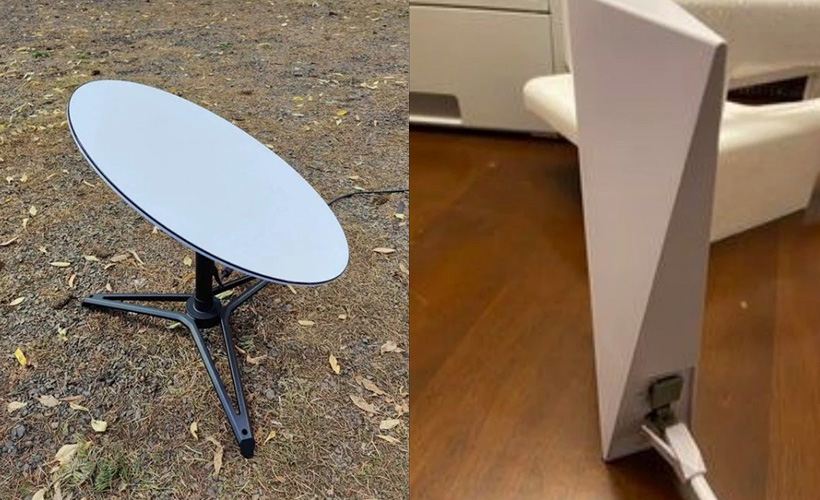
Starlink Unboxing + Speed Test + Full Installation [Video]
Video uploaded by Brett Batie on November 8, 2020
Breaking the (speed) barriers: from here to beyond the skies
OK, we know by now that words “Musk” and “space” mean pretty much the same thing (well, not exactly, but close enough). We are aware of SpaceX’s shuttles. We have noticed the StarLink, that worldwide cosmic Internet thingy that is already in operation at some areas and, moreover, at not exactly sky-high prices (sorry for – almost – unintentional pun), even though you can’t honestly call $99 per month on top of initial $499 an overly affordable cost (then again, a cheap futuristic service for everyone would make us rather suspicious).
But this? Simply put, those new plans by our man Elon – yes, again – are quite a leap even for him (especially if they will actually materialize). Suffice it to say that the latest info coming from his headquarters makes one wonder whether the actual communication through space is that much farther from reality than we thought at the Star Trek: TOS’ times as we have come to (disappointedly) think.
Because, according to the submission that SpaceX made to the US Federal Communications Commission, there are plans to extend the satellite system of aforesaid StarLink to virtually all types of transport in the Western world (yes, both US and Europe are to be covered), from trucks to air planes (trains included). And that’s even before the driverless Tesla fleet will become a fixture on our street.

The Starlink Kit includes: “Dishy McFlatface” which is a 19-inch dish phased-array antenna, a mounting tripod for the dish, and an oddly-shaped Wi-Fi router device.
Now granted, it’s not the first time Mr Musk mentions this idea: it’s one of his many other dreams and concepts he regularly tweets about. But until now, none of us here had any idea how serious he is about that already. It’s one thing to dream and quite another to actually have (apparently) something to pilot with the highest space authority in the country. Especially considering that said authority has already approved the first rollout, which is to include 1m – count them, a million – SpaceX data-casting terminals, working in concert with the already-greenlighted 4,4000 Earth-orbiting satellites. (The 550km from which height the data will be sent, is, it must be assumed, no object). And, mind you, over 1,000 of those satellites had already successfully materialized over our heads.
So what does SpaceX have that others don’t to be able to install the unimaginably fast Internet on already high-speeding machines? Well, according to the man himself, this special something is called phased-array beam-forming (stands to reason, if you ask us) technology. His satellite policy director David Goldman claims that antennae based on this kind of tech – and utilizing the Ku-band range – can handle pretty much any speed while hardly even trying. Among other things, he puts it down to the said beams’ extraordinary directionality that greatly boosts their tracking aptitude. In more plain and practical terms, this means that no matter how quickly your intercity express – or long-haul airliner – may go, regardless of how far into the unknown your cruise ship may venture, the connectivity on it will remain steady and immediate, what with being – literally – heaven sent.

SpaceX priced the Starlink Kit at $499US.
Expectedly, the title the company has chosen for these terminals reflects their sci-fi-like nature and scale: in the above-mentioned application they appear as “Earth stations”. Which, by the way, is a bit ironic in itself, taking into account that there is little if anything stationary about them: after all, these “stations” are meant to constantly be on the move. To be fair, the more detailed denomination does point this out, describing all the types of planned terminals, from “Vehicle-Mounted” to “Aboard Aircraft” ones, as “Earth Stations in Motions” (ESIMs for short), for anyone who might have missed the point.
Speaking of irony, despite the wide variety of the kinds of vehicles that are to carry those Earth Stations around, their array will actually not include Musk’s own Teslas we referred to above. The creator of both celestial Internet and electric road wonder has already admitted that those “UFOs on a stick” (which is his own, less formal – though not nearly less poetic – definition of ESIMs) simply won’t fit into a regular car, considering their size. And indeed, you can’t argue with the diameter of half a meter.
Of course, the naysayers – of whom Mr Musk has quite a crowd, being a notable envelope pusher that he is – will, no question, have a field game with this. We can already hear a bunch of (mostly obvious and unfunny) jokes about the left hand not quite aligning its work with that of the right, Tesla being too small a goal for the StarLink high-precision beams and so on. But from the unbiased point of view this seeming drawback is actually a sign, if a tangential one, of this project being sound. It’s when everything is promised to be perfect out of the gate that we need to worry. When, however, the real-life obstacles are noted and taken into account, with no attempts being made to draw out attention away from them, now this is a proof that the undertakers in question truly mean what they plan. And since this particular undertaker has already made quite a few of his once-looking-crazy ideas come true, we personally are bracing ourselves for that breakneck-speed – and breakneck-speeding – out-of-this planet connectivity of his. Last laugh and all this, you know.
Links
- Starlink – SpaceX
- Sell your electronic device online – iGotOffer






Facebook
Twitter
RSS